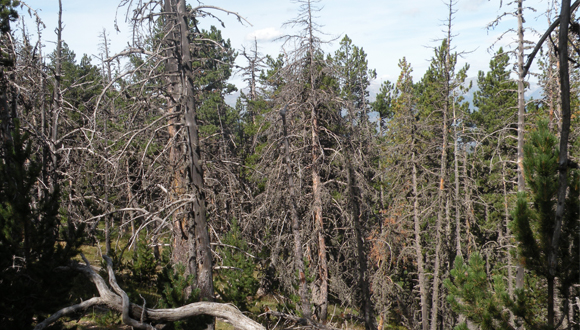Nutrient-rich forests absorb more carbon
The study, published in the journal Nature Climate Change, showed that forests growing in fertile soils with ample nutrients are able to sequester about 30% of the carbon that they take up during photosynthesis. In contrast, forests growing in nutrient-poor soils may retain only 6% of that carbon. The rest is returned to the atmosphere as respiration.
Marcos Fernandez-Martinez, first author of the paper and researcher at the Center for Ecological Research and Forestry Applications (CREAF) and the Spanish National Research Council (CSIC) says, “In general, nutrient-poor forests spend a lot of energy—carbon—through mechanisms to acquire nutrients from the soil, whereas nutrient-rich forests can use that carbon to enhance biomass production.”
“This paper produces the first evidence that to really understand the carbon cycle, you have to look into issues of nutrient cycling within the soil,” says IIASA Ecosystems Services and Management Program Director Michael Obersteiner, who worked on the study as part of a new international research project sponsored by the European Research Council.
Until now, scientific models to predict forest carbon sequestration on a global scale had only considered the amount of nitrogen in the soil and did not take into account other constraints such as phosphorus or the pH of the soil, which is related to the availability of nutrients. The new study includes both those factors as well as nitrogen availability, in an analysis synthesizing data from 92 forests in different climate zones on the planet. Tropical rainforests had the poorest nutrient availability, and the lowest efficiency for carbon sequestration, the researchers found.
The researchers believe that the difference in efficiency of carbon absorption could be due to several factors. For one thing, plants in nutrient-poor soils devote more energy to locating nutrients.
“When plants are in nutrient poor conditions, they send out more roots and produce chemicals that can help dissolve nutrients from the soil. This takes energy, though, and so the plants produce less biomass,” says Obersteiner. Furthermore, the study showed that nutrient-rich ecosystems also generally have more stable ground organic material, which is not easily degraded, and thus retains more carbon.

New developments along the lines of the new Synergy Grant project IMBALANCE-P
The new study is part of the ERC Synergy Grant, IMBALANCE-P. Researchers from the project on the paper incude: Josep Peñuelas, CSIC, Ivan Janssens, the Universiteit Antwerpen ( Belgium) Philippe Ciais , the Laboratoire des Sciences du Climat et de l' Environnement (France) and Michael Obersteiner from IIASA.
The article also includes the participation of other centers such as the University of Barcelona, the Institute of Arctic Biology , University of Alaska ( Alaska), the Environmental Change Institute of the University of Oxford ( USA ), the DIBAF , University of Tuscia (Italy ), the College of Urban and Environmental Sciences of Peking University ( China), Institute of Tibetan Plateau Research (China ) and the Max Planck Institute for Biogeochemistry (Germany ).
Reference article
M. Fernández-Martínez, S. Vicca, I. A. Janssens, J. Sardans, S. Luyssaert, M. Campioli, F. S. Chapin III, P. Ciais, Y. Malhi, M. Obersteiner, D. Papale, S. L. Piao, M. Reichstein, F. Rodà & J. Peñuelas (2014). Nutrient availability as the key regulator of global forest carbon balance.Nature Climate Change. http://dx.doi.org/10.1038/nclimate2177







